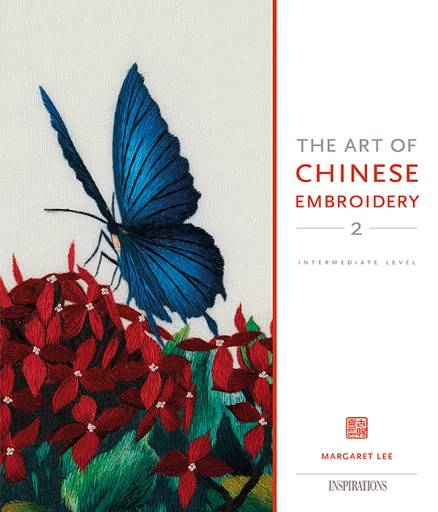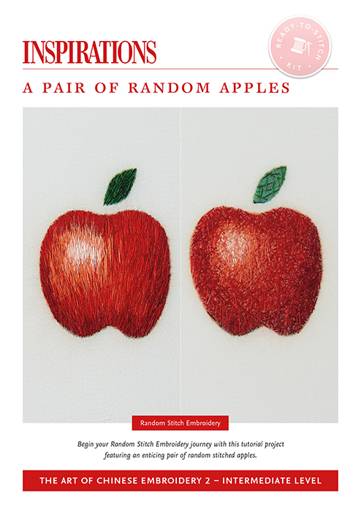An Introduction to Random Stitch Embroidery
26TH JUNE 2020 - ASU #240
Recently we launched Margaret Lee’s highly anticipated book ‘The Art of Chinese Embroidery 2 | Intermediate Level’ her second in this series. If you haven’t yet seen it, prepare to be amazed by the fascinating technique of random stitch embroidery which Margaret reveals for the first time in this book.

Margaret is an internationally celebrated designer, teacher and author, not just because of her unrivalled skill in her chosen techniques, but because of her true passion and wonderful, warm personality which is revealed in her books and all of her work.

Margaret has dedicated much of her life to preserving the art of Chinese embroidery and, uniquely, pioneering ways to teach these techniques to the western world.
This second book, ‘The Art of Chinese Embroidery 2 | Intermediate Level’, builds on the fundamentals Margaret introduced in ‘The Art of Chinese Embroidery 1 | Foundation Level’ which she recommends you work your way through first to help build an understanding of the techniques she uses.

Copies of Margaret’s first book have been hard to get hold of due to its popularity after selling out for the third time, but we’re pleased to announce it’s now finally back in stock so you can follow the journey that Margaret wants to take you on.

When you meet random stitch embroidery in ‘The Art of Chinese Embroidery 2’, you’ll be encouraged to start by following the detailed tutorial in the book to stitch a pair of apples. This tutorial provides the perfect introduction to random stitch embroidery, allowing you to understand the technique and see the effect that the stitches have on the overall finish.
When working through the tutorial, you might find yourself asking what the difference is between Chinese embroidery and threadpainting.
This is a common question, so we wanted to try and offer a simple answer.

The first difference is in the thread you use. Chinese silk results in pieces with a particular sheen, unmatched by any twisted thread equivalent. Furthermore, as the silk is seemingly endlessly divisible, it is possible for you to create the finest of stitches from the hair-thin filaments.

In addition, the technique varies as well. Probably most importantly, threadpainting requires you to split the previous stitches. Chinese blending stitch, closest in appearance to long and short stitch, has you work the stitches into the previous row without splitting the threads.
Finally, Chinese embroidery requires a level of formality to achieve the desired results. With long and short stitch, you’ll frequently hear teachers or designers encouraging you to ‘let yourself go’, allowing you to place stitches wherever you feel within certain rules of direction. In contrast, Chinese techniques are planned and structured in ways specific to the design and the desired effect.

Random stitch embroidery, the predominant subject of ‘The Art of Chinese Embroidery 2’, provides something of a bridge between the two, allowing a measure of freedom within the careful techniques required. The results, however, are incredible.
How fortunate we are to have people like Margaret who are so dedicated to making these wonderful techniques available to all of us. Now is the perfect time to start developing this new skill, guided by Margaret’s gentle yet expert hand.
Make Your Own | A Pair of Random Apples

Step 1 – Purchase Project Instructions
Begin your random stitch embroidery journey with the project ‘A Pair of Random Apples’ from the book ‘The Art of Chinese Embroidery 2 | Intermediate Level’ which is a tutorial design featuring an enticing pair of random stitched apples.

Printed Book
The Art of Chinese Embroidery 2
Shop NowStep 2 – Purchase Ready-To-Stitch Kit
The Inspirations Ready-To-Stitch kit for A Random Pair of Apples includes everything* you need for this beautiful instructional exercise: Pre-printed fabric, silk embroidery threads and needles.

